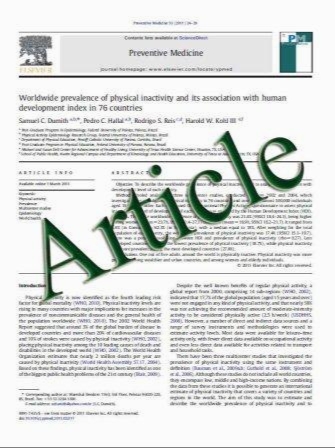Class A scavenger receptor attenuates myocardial infarction-induced cardiomyocyte necrosis through suppressing M1 macrophage subset polarization
- نوع فایل : کتاب
- زبان : انگلیسی
- مؤلف : Yulong Hu ,Hanwen Zhang , Yan Lu , Hui Bai , Yiming Xu , Xudong Zhu , Rongmei Zhou , Jingjing Ben , Yong Xu , Qi Chen
- چاپ و سال / کشور: 2011
Description
Classically (M1) and alternatively (M2) activated macrophage subsets play differential roles in left ventricular remodeling after myocardial infarction (MI). The precise mechanism underlying the regulation of M1/M2 polarization during MI is unknown. We hypothesized that class A scavenger receptor (SR-A), a key modulator of inflammation, may steer macrophage polarization, which in turn influences cardiomyocytes necrosis after MI. MI was induced in wild type (WT) and SR-A deficient (SR-A-/-) mice by left anterior descending coronary artery ligation. Cardiac function deterioration, ventricular dilatation and fibrosis were all exacerbated in SR-A-/- mice following MI compared to WT littermates. Meanwhile, enhanced M1 macrophage polarization was observed in SR-A-/- mice, along with increased production of M1 signature cytokines including interleukin-1b (IL-1b), IL-6, and tumor necrosis factor-a (TNF-a) as demonstrated by immunohistochemistry, flow cytometry, quantitative realtime PCR, and ELISA assays. Moreover, activation of the activated apoptosis signal regulating kinase 1 (ASK1)/p38 mitogen-activated protein kinase (MAPK)/nuclear factorjB (NF-jB) signaling pathway was markedly elevated in SR-A-/- animals post-MI. Most importantly, transplantation using bone marrow from SR-A?/? mice partially restored M1 macrophages and significantly augmented left ventricular fractional shortening in SR-A-/- mice. SR-A attenuated MI-induced cardiac remodeling by suppressing macrophage polarization toward a skewed M1 phenotype, reducing secretion of IL-1b, IL-6, and TNF-a, and dampening the ASK1/p38/NF-jB signaling pathway. Therefore, SR-A may exert a protective effect against MI, which may represent a new interventional target for treatment of post-infarct remodeling and subsequent heart failure.
Basic Res Cardio lReceived: 14 April 2011 / Revised: 27 June 2011 / Accepted: 7 July 2011


